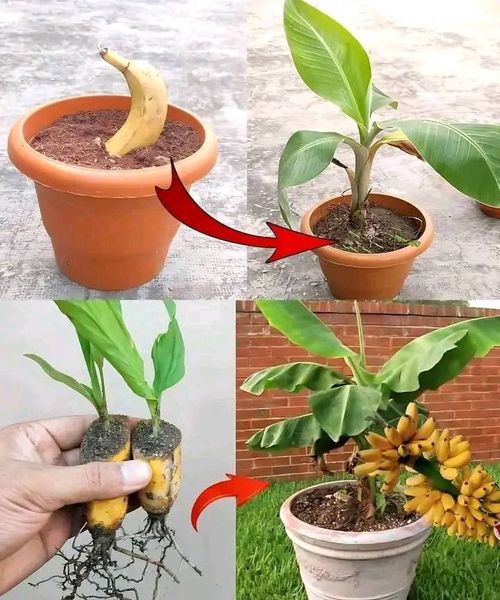1. Select a Ripe Banana
- Choose the Banana: Start with a ripe banana from your current plant or a healthy store-bought one. However, bananas do not grow from the fruit itself but from suckers, or pups, that sprout from the base of a mature banana plant.
2. Peel Carefully (Myth)
- Note: Planting the banana fruit itself will not grow a banana tree. Instead, focus on using a sucker or pup from the base of an existing banana tree.
3. Find a Sunny Spot
- Sunlight: Choose a location that receives plenty of sunlight, ideally 6-8 hours of direct sunlight daily. Bananas thrive in warm, sunny climates.
4. Prepare the Soil
- Soil Quality: Ensure the soil is rich in organic matter, well-draining, and slightly acidic (pH between 5.5 and 6.5).
- Soil Amendments: Add compost or well-rotted manure to improve soil fertility and drainage.
5. Plant the Sucker or Pup
- Dig the Hole: Dig a hole twice as wide and deep as the sucker’s root ball.
- Planting: Place the sucker in the hole, ensuring that the base is level with the surrounding soil. Fill in the hole with soil, gently pressing down to eliminate air pockets.
6. Water and Mulch
- Watering: Water the newly planted sucker thoroughly to help establish the roots. Keep the soil consistently moist but not waterlogged.
- Mulching: Apply a layer of organic mulch around the base to retain moisture, regulate soil temperature, and suppress weeds.
7. Provide Care
- Fertilization: Fertilize every 2-3 months with a balanced fertilizer (high in potassium) to encourage strong growth.
- Protection: Protect the plant from strong winds and frost, as banana plants are sensitive to cold weather.
8. Watch for Growth
- New Leaves: Monitor the plant for the emergence of new leaves, which indicates healthy growth.
- Support: As the plant grows, it may need support or staking to keep it upright.
9. Maintain the Tree
- Pruning: Remove dead or damaged leaves to promote air circulation and reduce disease risk.
- Sucker Management: Regularly remove excess suckers to focus the plant’s energy on producing fruit.
10. Harvest Ripe Bananas
- Harvesting: When the bananas are full-sized and beginning to ripen, cut the entire bunch from the tree. Allow the bananas to ripen further indoors if needed.
Additional Tips
- Climate Considerations: Banana plants grow best in tropical or subtropical climates. If you live in a cooler region, consider growing bananas in containers so they can be moved indoors during colder months.
- Pests and Diseases: Keep an eye out for common pests like aphids and fungal diseases. Treat with organic pesticides or fungicides as necessary.
By following these steps and focusing on using a sucker or pup rather than the fruit itself, you can successfully grow a banana tree and enjoy your own homegrown bananas!
